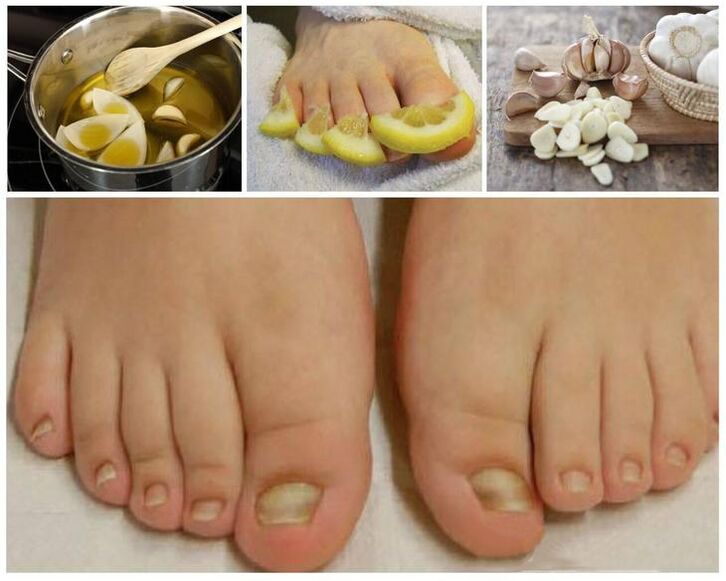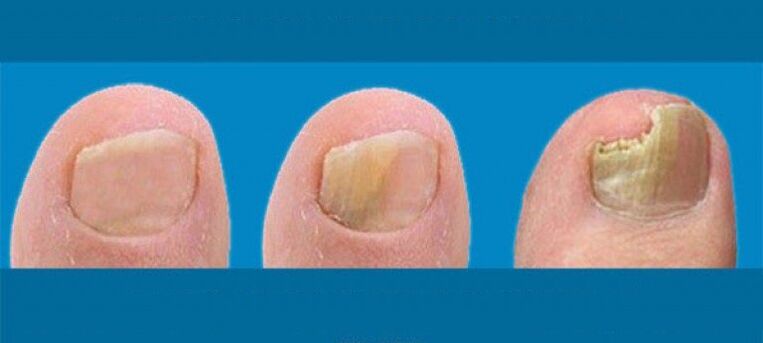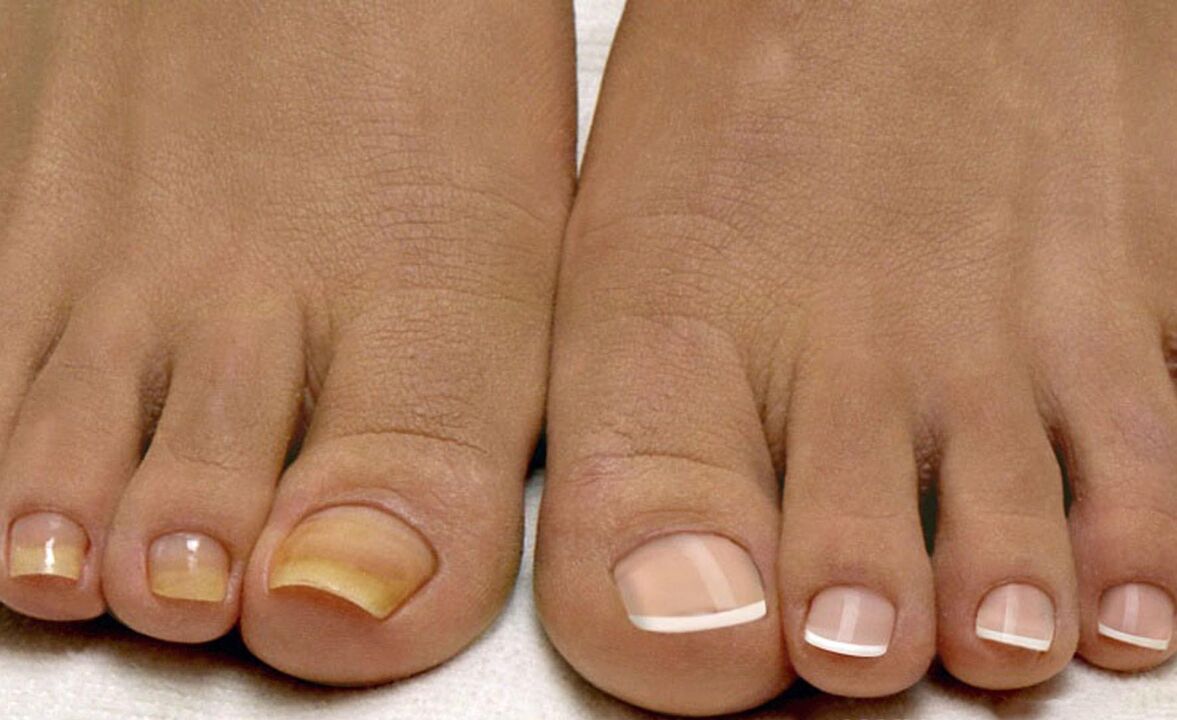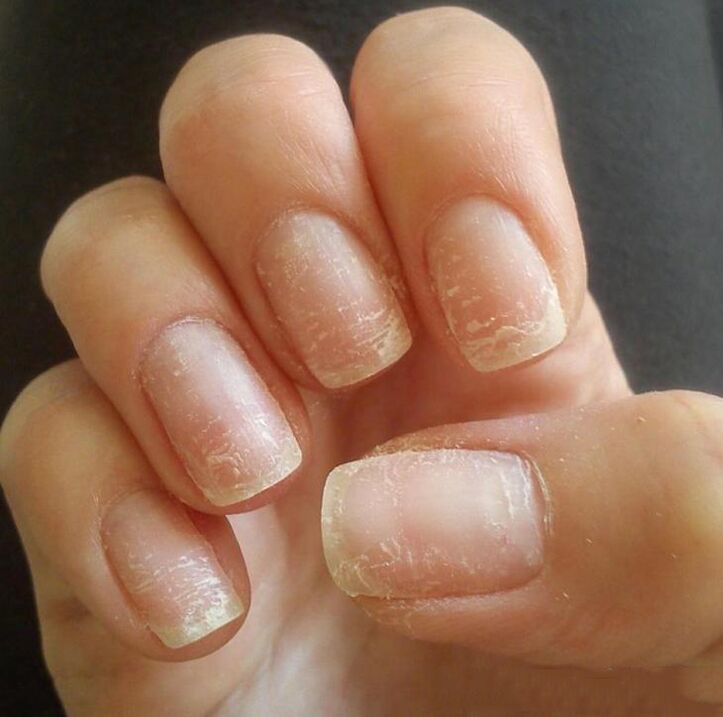
A fungal infection can absolutely affect any part of the body.Fungi, like other bacteria and microorganisms, are always present in the human body and in its skin in strict balance.When the number of fungi increases for various reasons, an infection can begin.
Onychomycosis, also called onichia fungi, is a fungus infection that affects the nails either in the legs or in the hands.It develops slowly, so it is very difficult to notice any sign of the disease at first.
Why is it developing?
The nail fungus infection begins from the moment the number of fungi inside, under or on the nails increases significantly.The fungus loves a warm and humid environment, so during any suitable environment they begin to multiply intensely.Nail fungi occur due to the same fungus that cause limited eczema, mycosis and cuttings.
The fungus, living calmly and in the body of absolutely any person, can cause nail infection.If you are in contact with someone who has this disease, it can be transmitted to you.According to the American Academy of Dermatology, fungal infections often affect the legs in the legs than in the arms because the fingers are most often in a warm, wet environment.
If you are used to making manicure and pedicure in the cabin, then it's worth finding out how staff disinfect the tools and how often it does it.Farewell to manicure and pedicure, such as nail files and nippers, can be a source of infection, which in any case, without proper disinfection, will be transmitted to another person.
Who can get infected?
There are many causes of a nail fungus infection, and each of them is treated in its own way.Most of these reasons can naturally be prevented, but there are some factors that significantly increase the risk of this infection.The highest risk of developing nail fungus are people who:
- They are sick with diabetes;
- have a disease that weakens blood circulation;
- over 65 years old;
- have upper nails;
- Visit public baths, pools;
- have nail damage;
- are damaged on the skin around the nails;
- The legs are constantly in moisture or sweat constantly;
- have a weak immune system;
- They wear tight and tight shoes like tennis shoes and boots.
A fungal infection is more common in men than in women, and more often in older people than in children.If someone is sick in your family with a fungus, then most likely, you will have it in the future.Older people have the greatest risk of developing this infection, as blood circulation worsens with age, and nails grow more slowly and become thicker.
What does nail fungus look like?
A fungus infection can affect a piece of nail, the entire nail or some nails immediately.
Signs

The clear symptoms of nail fungus are:
- Nail layering, which is called pure hyperkeratosis;
- white or yellow lines on the nail, which are called side onycomycosis;
- the crushed edges of the nails or corners, which is called distal onycomycosis;
- Excess white spots on the nails, after which the holes remain;
- the appearance of yellow spots near the nail hole, which is called proximal onycomycosis;
- Nail loss.
Overall signs
The usual symptoms of fungal infection are considered:
- deformation of the nail plate, the nail does not keep well in its place;
- an unpleasant odor from an infected nail;
- crumbs or thick nails.
How do I find out if I have a nail fungus?
The only way to confirm the diagnosis is to consult a doctor because some other infections can also affect the nails and have fungal -like symptoms.In such cases, a nail piece is usually obtained, which is sent to the laboratory for detailed analysis and clarification of the diagnosis.
When is the time to see a doctor?

In most cases, nail fungi are considered a purely cosmetic problem.However, in some people, a fungal infection can cause serious complications.So in people with diabetes, nail fungus can further lead to foot ulcers or other leg problems.According to the 2012 study, a chronic fungus of nails in the foot is considered one of the main risk factors and a major condition for the development of bacterial foot cellulite.
Therefore, if you have diabetes or a weakened immune system, you should not use household tools for the treatment of nail fungus.Contact your doctor for help to find out how to treat the fungus on the foot and how to treat.
How to cure the nail mushrooms on your feet?
Excess drugs are usually not recommended for the treatment of fungal nail infections because they do not produce reliable results.Instead, your doctor prescribes oral antifungal drugs.These medicines are very effective, but have many side effects of stomach disorder and dizziness to skin and jaundice problems.
You can use other antifungal agents, such as antifungal or nail base.It is applied to the nail in the same way as the usual nail plate.Depending on the type of fungus, as well as the degree of damage to the nail plate, this tool may have to be used for several months.
Unfortunately, treatment does not guarantee to get rid of fungal infection quickly.In almost half of the cases, nail fungus returns again.Complications are not excluded.Perhaps for this reason, many people are more likely to use the help of traditional medicine.
Folk remedies for fungi
The mushrooms on the nails are not at all you want to see on your feet, especially in summer during the beach season.Therefore, we decided to collect the 10 most popular and effective remedies of traditional medicine to find out how to treat nail fungus.
Snake Highlander extract

Snake Highlander's extract is a natural antifungal agent.The snake highland refers to the plants of the sunflower family.A study conducted in 2008 showed that the extract is also effective against foot fungi, as a cyclopropx drug prescribed by the recipe.To get rid of the fungal infection with this method, you need to adhere to the following scheme: In the first month of treatment, apply an extract to the affected area each third day, in the second month twice a week and within a third month 1 time a week.
Tea tree oil
Tea tree oil, also called melaleuka, is an essential oil that has an antifungal and antiseptic effect.It is also recommended for the treatment of nail fungus.You just have to apply tea tree oil directly to the sore nail twice a day with a cotton swab.
Ordinary oregano oil
Ordinary oil contains thymol.Timol has an antifungal and antibacterial effect.To treat the fungus on the nails of the legs, apply the oil twice a day with a cotton swab.Some people use ordinary oregano oil along with tea tree oil.Both products have a powerful effect and can cause irritation and allergic reactions, so it is not recommended to combine these oils.
Olive
It is believed that the active substance in the olive leaf extract, oleuroperina has antifungal, antimicrobial and immunomodulatory effects.You can apply an olive leaf extract directly to the nail fungus or drink in the form of capsules.Despite the fact that capsule treatment is considered more effective than the application of olive oil extract.Take 1-3 capsules with food 2 times a day.Throughout the treatment, drink plenty of liquids.
Ozoned oils

Ozoned oils, such as olive and sunflower, are saturated with a gaseous ozone.According to the 2011 study, the effect of ozone on low concentrations for a short period of time can kill many microorganisms, such as fungi, yeast and bacteria.In another study, it was found that ozone sunflower oil turned out to be more effective in treating nail fungus infection than the cetoconazole antifungal drug sold according to the recipe.
To treat the fungus on the nails with ozoned oil, treat the nail twice a day.
vinegar
There is no scientific evidence that vinegar helps treat fungi.However, this is a very safe home medicine that you can try.To do this, make the baths with warm feet for the legs with vinegar, diluting 1 part vinegar in 2 parts of water.The procedure should be performed daily for 20 minutes.
Freshener for oral cavity
The refreshing composition includes menthol, thymolin and eucalyptus, which have antibacterial and antifungal properties.Perhaps this is why it is so popular among people in the treatment of nail fungus.You just have to keep a leg of problems in a pelvis with a refresher for 30 minutes.The procedure is performed daily.
Garlic

As you know, garlic has an antifungal and antimicrobial effect.To get rid of a fungal infection, apply chopped garlic cloves to nail problems for 30 minutes a day.If you don't like the wind, you can try garlic capsules.Get strictly as directed.
Make adjustments to the diet
Our health depends on what you eat.The more useful the food you consume, the greater the chance for your body to withstand various adverse factors and diseases, including nail fungus.
Eat the food needed for the body for normal functioning, namely:
- Probiotics enriched yogurt;
- enough protein for normal nail growth;
- Enough iron to prevent nail fragility;
- food, rich in necessary fatty acids;
- Food rich in calcium and vitamin D (low dairy products).
In this case, home remedies may turn out to be more effective than the medication released according to the recipe in the treatment of soft and moderate stages of the course of the disease.Of course, traditional medicine tools have fewer side effects, but their effectiveness has not been scientifically proven.Many factors should be considered in the treatment of nail fungi infection, such as nail permeability, seriousness of the disease and general state of health.

Treatment with the help of traditional medicine usually lasts longer than treatment with medication.The first results can only appear after a few months.It often happens that the problem comes back again.
How to prevent a fungal nail infection
Only some simple lifestyle changes will protect you from this serious and annoying infection.Take care of your nails, cut them in time and keep them clean.Try not to damage the skin once again around your nails.If the hands are often in contact with water, place rubber gloves.
Here are some tips on how to protect yourself from fungi:
- Regularly use antifungal sprays and powders;
- Wash your hands after contact with infected nails;
- Wipe the dried legs behind the shower, especially in the area between the fingers;
- make manicure and pedicure in proven salons;
- Use only your tools for manicure and pedicure;
- Wear socks for the season to prevent foot skin water;
- Do not go barefoot in public places;
- Reject artificial nails and paint your nails with spray.
What to expect in the future?
Do not expect an immediate result.In some people, treatment may not help immediately and some courses or drug replacement will be required.Fungal infection is considered only curated if a new nail is increased without signs of a fungus.But this does not guarantee that the fungal infection will no longer return.In more advanced cases, the nail undergoes persistent infection with a fungus, and will need to be removed.
The main complications of fungal infection are:
- regeneration;
- Removing an infected nail, both once and forever;
- whitening of the fungal -affected nail;
- the spread of infection in other parts of the body and even in the bloodstream;
- The development of a bacterial skin infection, called cellulite.
You should consult a doctor in any case, especially if you have diabetes and nail fungus.People with diabetes expose themselves to a great risk of developing serious complications, so do not waste time and make an appointment with a doctor.

















